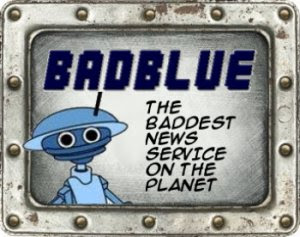Depressing.
Despite purported political openness, restrictions on the rights to freedom of expression, association and movement continued. Local civil society and opposition groups reported increased politically motivated detentions and harassment of government critics.
Background
The re-establishment of relations between the USA and Cuba in 2015 led to increased trade and tourism between the two countries in 2016. For example, commercial air services from the USA to Cuba resumed after more than 50 years.
In March, US President Barack Obama visited Cuba and met President Raúl Castro, the first visit to Cuba by a US President in nearly a century.1 Fidel Castro died in November.2
Millions of tourists, many from the USA and Europe, visited Cuba in 2016, resulting in a significant boom in the tourism industry.
Cuban migrants continued to fly to South and Central American countries and to travel north overland in order to reach the USA. Between October 2015 and July 2016, more than 46,000 Cubans entered the USA, slightly more than in 2015 and twice as many as in 2014, according to Pew Research Centre.
Throughout the year, the Inter-American Commission on Human Rights (IACHR) expressed concern about the situation of Cuban migrants attempting to reach the USA. In August, more than 1,000 Cuban migrants were stranded in Colombia close to the border with Panama. The IACHR expressed concern that they did not have access to food and were at risk of being trafficked. In July, 121 Cuban migrants were allegedly deported from Ecuador without proper notification or the opportunity to appeal against the decisions.
Cuba had not ratified the ICCPR or the ICESCR, both of which it had signed in February 2008, nor the Rome Statute of the International Criminal Court. Likewise, Cuba had not recognized the competence of the UN Committee against Torture nor the UN Committee on Enforced Disappearances to receive and consider communications from victims or other states parties.
Freedoms of expression and association
Despite the re-establishment of relations with the USA in 2015, Cold War rhetoric persisted, with political activists and human rights defenders being publicly described as “anti-Cuban mercenaries”, “anti-revolutionary” and “subversive”.
The judicial system remained under political control. Laws covering “public disorder”, “contempt”, “disrespect”, “dangerousness” and “aggression” were used in politically motivated prosecutions.
Government critics continued to experience harassment including “acts of repudiation” (demonstrations led by government supporters and involving state security officials).
The government continued to use limitations on access to the internet as a key way of controlling both access to information and freedom of expression. Only 25% of the population was able to get online and only 5% of homes had internet access. By August, there were reportedly 178 public Wi-Fi spots in the country. However, there were frequent reports of the Wi-Fi service being interrupted. The government continued to block and filter websites, limiting access to information and criticism of state policies.3
Arbitrary arrests and detentions
Reports continued of government critics and activists – such as the Ladies in White – being routinely subjected to arbitrary arrest and short-term detention for exercising their rights to freedom of expression, association, assembly and movement.4
The authorities engaged in a game of “cat and mouse” whereby activists were repeatedly picked up, detained for periods of between eight and 30 hours and then released without charge, often several times a month.
The Cuban Commission for Human Rights and National Reconciliation documented a monthly average of 862 arbitrary detentions between January and November, an increase compared with the same period in 2015.
Those held for longer periods in “provisional detention” were often not charged and their relatives were rarely provided with documents giving the reasons for the detention.
In July and August, Guillermo Fariñas, who was awarded the EU’s Sakharov Prize for Freedom of Thought in 2010, and other political activists, mostly from the Patriotic Union of Cuba, went on hunger strike in a mass protest against what they believed to be the increasingly violent repression of dissidents and activists.
At the end of the year, graffiti artist and prisoner of conscience Danilo Maldonado Machado, known as El Sexto, was being held in El Combinado del Este, a maximum security prison on the outskirts of the capital, Havana. Danilo Machado was arrested in his home on 26 November, hours after the announcement of Fidel Castro’s death. The same day, Cuba-based newspaper 14ymedio reported that he had written the words “He’s gone” (Se fue) on a wall in Havana.5
International scrutiny
Independent human rights organizations and mechanisms, including UN Special Rapporteurs, did not have access to Cuba.
Independent monitors were also denied access to prisons. Cuba remained the only country in the Americas region which Amnesty International did not have permission from authorities to visit.
- Obama-Castro encounter: More than a handshake needed to thaw the Cold War’s human rights (News story, 21 March)
- Fidel Castro’s human rights legacy: A tale of two worlds (News story, 26 November)
- Six facts about censorship in Cuba (News story, 11 March)
- Americas: Open Letter from Amnesty International to US President Barack Obama, Cuban President Raul Castro and Argentine President Mauricio Macri (AMR 01/3666/2016)
- Cuba: Graffiti artist transferred to new prison: Danilo Maldonado Machado (AMR 25/5279/2016)
Amnesty International is licensed under Attribution-NonCommercial-NoDerivatives 4.0 International.
H/t Babalú Blog.



Facebook Comments